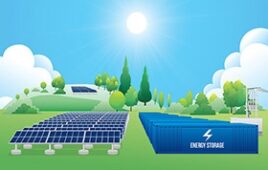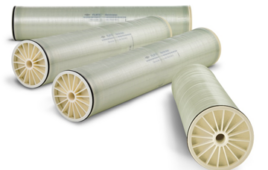 Across the world, agricultural practices are responsible for one-quarter of global anthropogenic greenhouse gas emissions, according to the Intergovernmental Panel on Climate Change. Add in food handling and processing activities, and that fraction grows to one-third.
Across the world, agricultural practices are responsible for one-quarter of global anthropogenic greenhouse gas emissions, according to the Intergovernmental Panel on Climate Change. Add in food handling and processing activities, and that fraction grows to one-third.
A new study from researchers at Columbia University’s Center for Climate Systems Research and the NASA Goddard Institute for Space Studies has found that if industrial emissions continue to decline, fine-particulate air pollution will decrease despite expected growth in world food production and fertilizer usage.
In the future, “one of the few things we can be sure about expecting is that the population will further grow and (we) will need to produce food,” said Susanne Bauer, a climate scientist with Columbia University and NASA, to R&D Magazine.
In farming, ammonium is a prime source of air pollution. Produced by heavily fertilized fields and livestock waste, it enters the atmosphere as a gas. Once in the air, it mixes with pollutants formed from combustion to create harmful aerosols, which can measure around 1/30 of the width of a human hair.
“We don’t know too much about the toxicology of individual particles, therefore we mainly classify them by size,” Bauer said. “Thus the smaller a particle is, the deeper it can travel into our lungs and lead to cancer and cardiopulmonary mortality.”
In their study, the researchers discovered more than half the aerosol ingredients in the eastern and central United States originate on farms. The trend is stronger in Europe and China.
“Ammonium-nitrate aerosols … are supposed to increase in the future whereas all other pollution related aerosol particles are expected to decrease, due to the expectation of improved technologies and filtering systems,” said Bauer.
According to the university’s Center for Climate Systems Research, artificial fertilizer production has grown from around 20 million tons in 1950 to close to 190 million tons today. “The amount of aerosols created as a result depends on many factors, including air temperature, precipitation, season, time of day, wind patterns and of course the other needed ingredients from industrial or natural sources,” according to the center.
While the findings suggest future pollution may be abated by decreasing combustion pollution sources, that doesn’t mean humanity should become careless and drastically increase fertilizer usage.
“Farming emissions should become part of policy discussions which in my view are too much focused on the transportation sector alone,” said Bauer. “We need to reduce all man made sources not just one.”
Bauer suggested reducing any excessive fertilizer use, and not growing crops or raising animals close to densely populated areas, where the ammonium may mix with other pollutants.
“However that would lead to longer transportation ways, which in turn would not be advisable at all,” Bauer added. “I’m not a (farming) expert and I’m sure other people would know more about how farming could be improved to reduce emissions.”
R&D 100 AWARD ENTRIES NOW OPEN:
Establish your company as a technology leader! For more than 50 years, the R&D 100 Awards have showcased new products of technological significance. You can join this exclusive community! Learn more.




